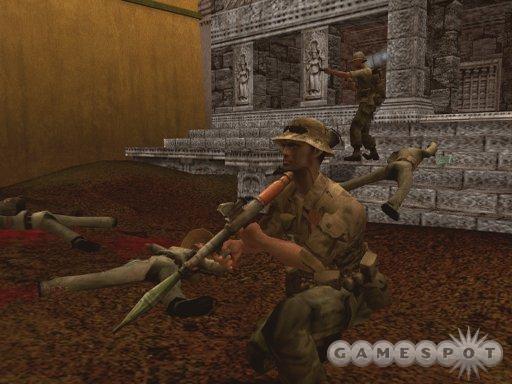ShellShock: Nam '67 Designer Diary
Lead artist Mathijs de Jonge tells us about creating the characters in Guerrilla's gritty war game.
Guerilla Games' Shellshock: Nam '67 may not be your typical war game. Rather than glorifying the heroes and vilifying the bad guys, the game will present the Vietnam War in all its bloody turpitude from one soldier's perspective. One of the most important elements of selling the hellish experience of fighting in Vietnam is creating a believable aesthetic. In our first Shellshock designer diary, Guerilla artist Mathijs de Jonge tells us about what it takes to re-create the iconic soldiers and environments of the Vietnam War for a video game.
Designing Characters for Shellshock: Nam '67
By Mathijs de JongeLead Artist, Guerrilla Games

Paramount to everything, the first thing we needed to do was to set the style for the game. In doing this, the aim was to re-create late-60s Vietnam in our minds by researching heavily and brainstorming among ourselves--basically employing a technique we call "extreme sketching." The product of all this is a series of conceptual sketches that actually define how Shellshock: Nam '67 would look on screen. A good example of this technique in action is in the process we used to come up with the main character of the game--the one you play.
In 1967 there were many different types of soldiers in Vietnam, and as the game follows one year in the life of a US Army grunt, we knew we had to fit our character into that type of story. So, we started with three rough ideas: First we sketched out a very young-looking, fresh-faced FNG (we actually made him look a little like Casper van Dien from Starship Troopers). Then we decided to age the character and give him more of a rumpled and tired look--like he's been humping through the jungle for some time, edgy but ready. Our final sketch took this theme much further and we created a real veteran type, one with a "thousand-yard stare" that makes you aware that this guy has been through hell and back. With these three concepts in mind and on paper, we could get down to the real business of making a decision. We weighed up the basic concept surrounding each character and eventually we felt that the new guy, although a good concept, did not entirely fit in, as he was a little too fresh-looking--and in 'Nam he would not keep that for long. On the contrary, the veteran had simply seen too much action and therefore there was no real development here for us. We finally decided upon the tired, solid grunt type. He had a little freshness, a little veteran, and overall he felt comfortable as a player character.
In creating the characters and the game style, we also relied heavily on primary documentation. There is a rich seam of information and photography surrounding the war, so we simply used this as the major reference material for our 3D artists. We set a couple of ground rules: Nothing after 1967 was allowed for continuity's sake, and after the initial concept had been agreed upon--no more sketches--only photos could be used. We did not want to water down the reality that was 1967 by reinterpreting real images and drawing them out again. We collected as much reference material as was possible. It is worth noting that good quality game assets not only come from talented artists, but they also come from providing the artists with the most solid and relevant references possible. Using these ground rules, we were able to accurately define our characters and the actual visual style of the game.

On the more technical side of asset creation, one very important decision we made from the very start was to set up a "body parts system." Often, 3D objects are created as single mesh characters. Instead, our technical artist wrote a small script in Maya that enabled us to combine different body parts into one single character. This meant that we could create a number of variations on each character's individual body parts and chop and change these at will. We could also do the reverse. Some characters wear the same equipment, such as boots. With the body parts system, we only need to make one pair of boots and then share these across a few different character types (for example, US soldiers). Techniques like this either saved us a lot of time, which can be spent wisely polishing other parts of the game, or they allow us great variation on one theme. Both have their merits when employed in the right place.
Our aim from the start has been to re-create the look and feel of the Vietnam War, and our approach has been to capture its grit in a realistic fashion. By using our tech wisely and investing so much time in concept and reference material, we feel we have achieved this admirably...hope you like it.
Got a news tip or want to contact us directly? Email news@gamespot.com
Join the conversation